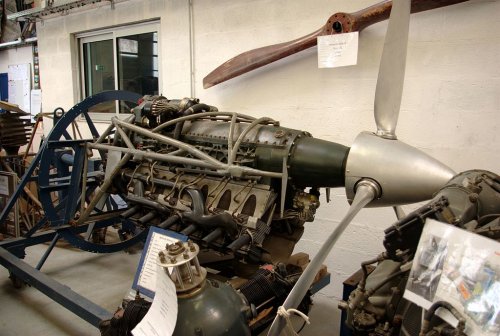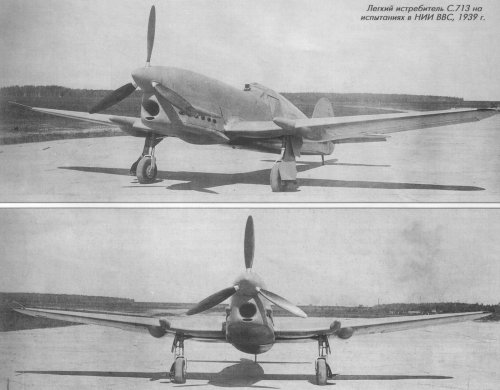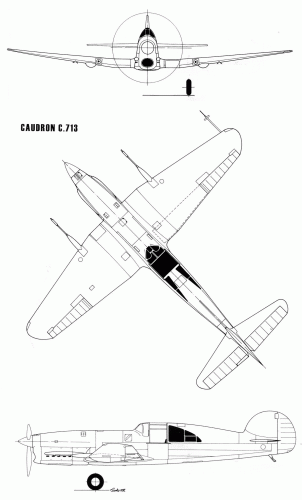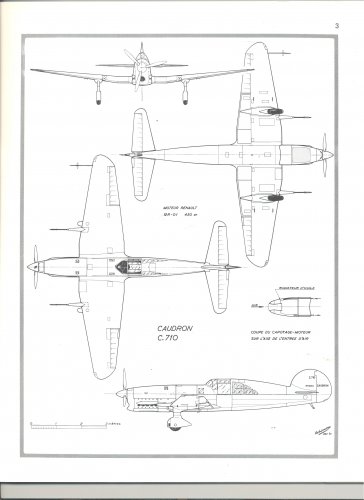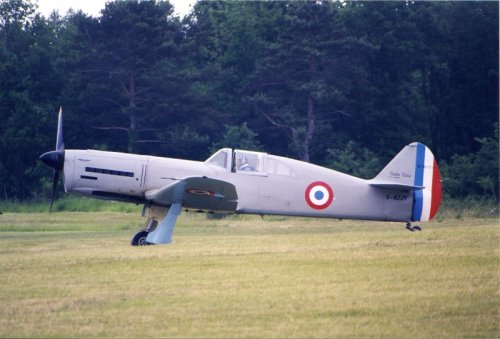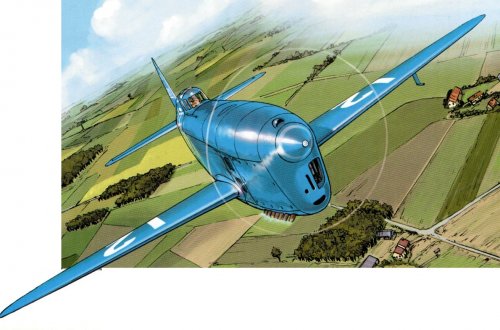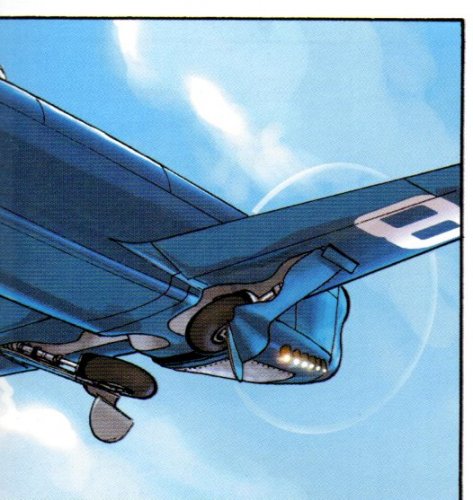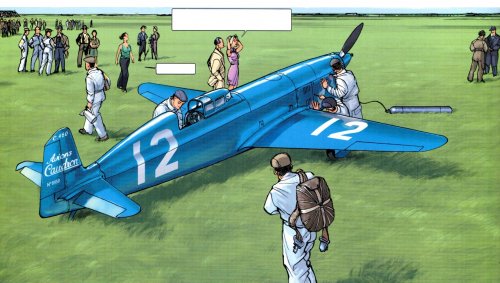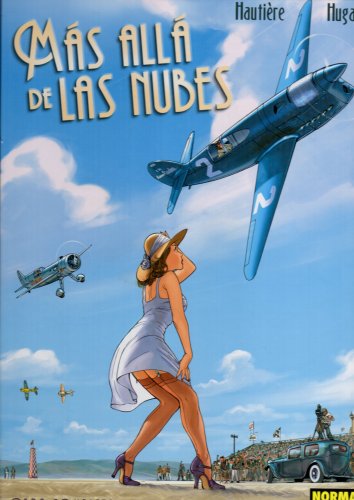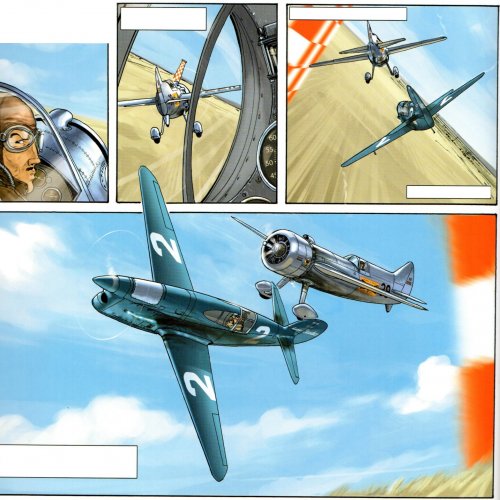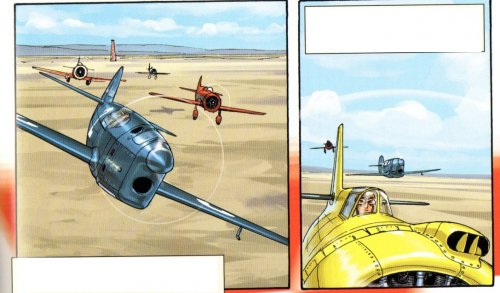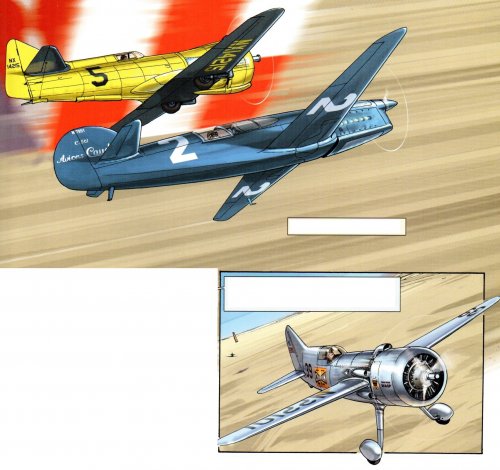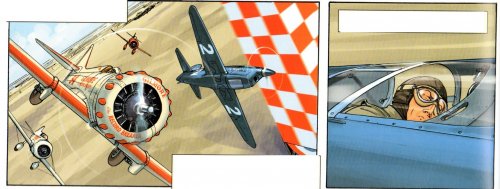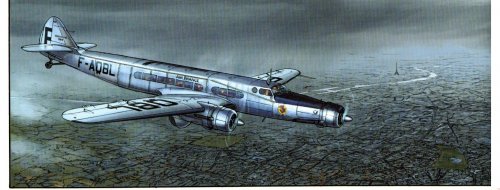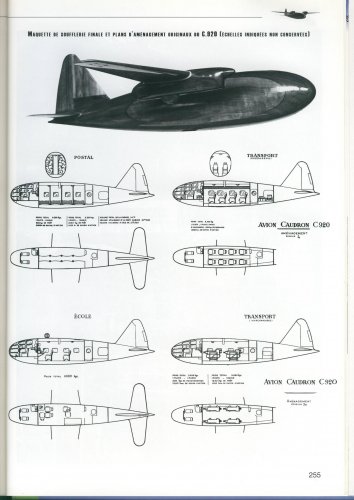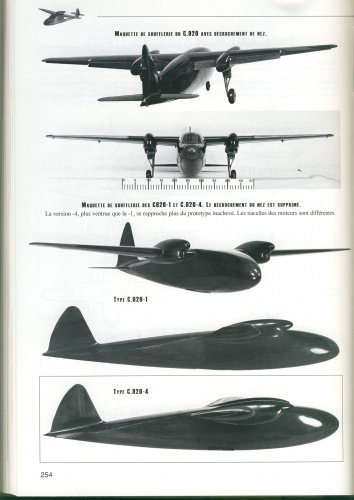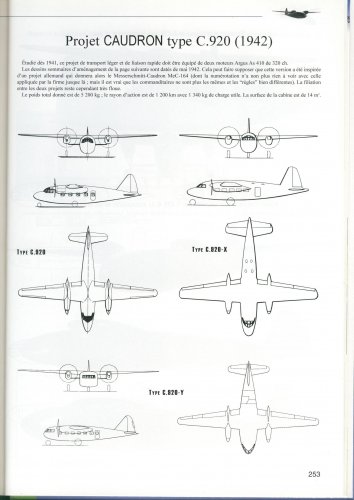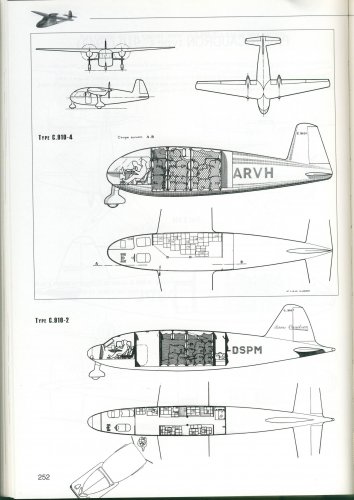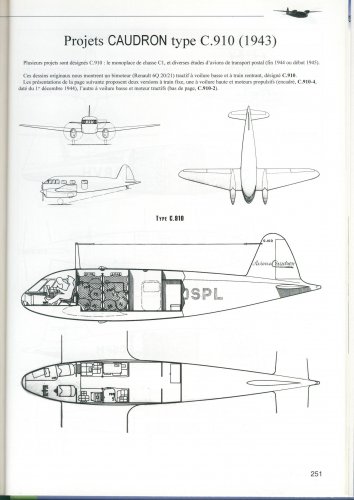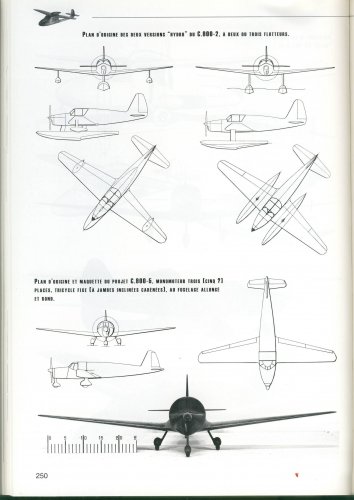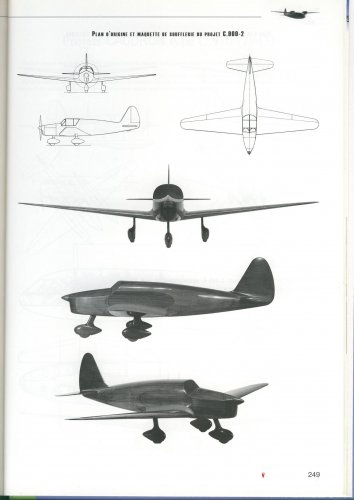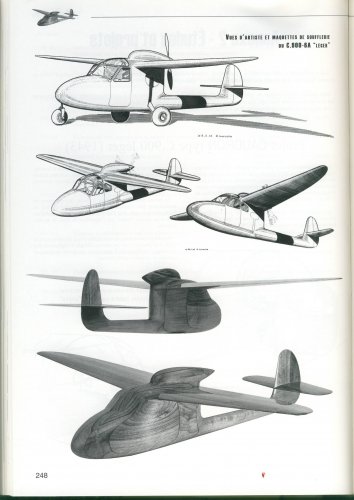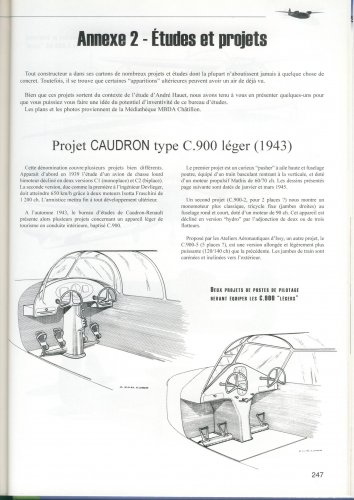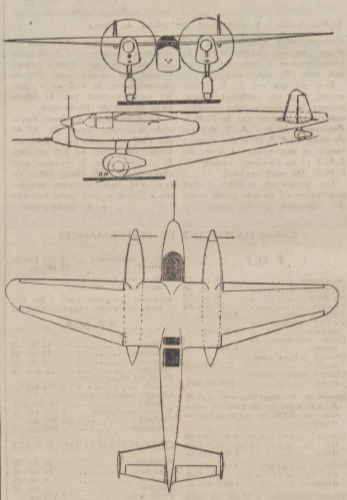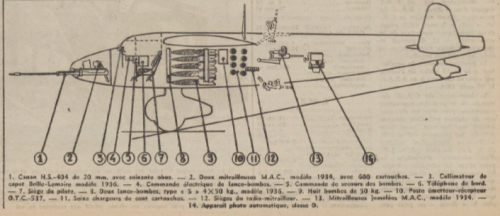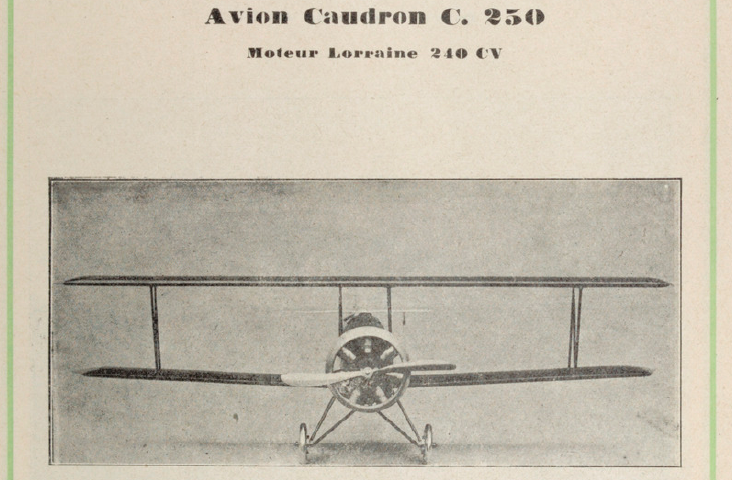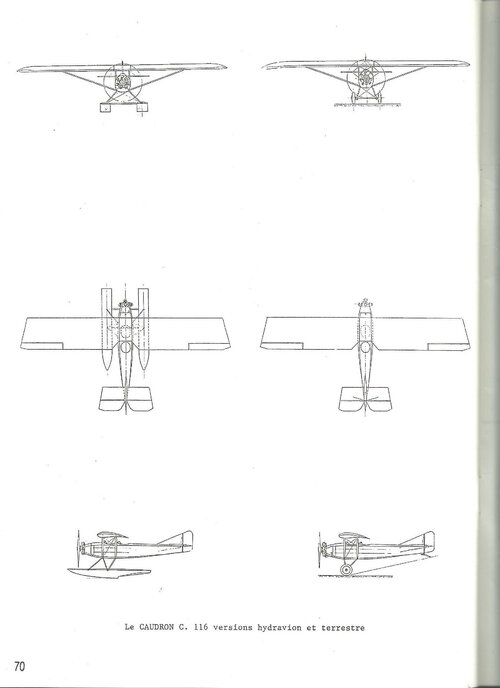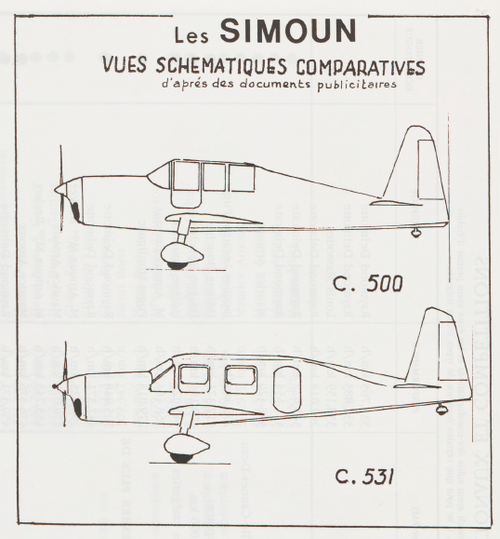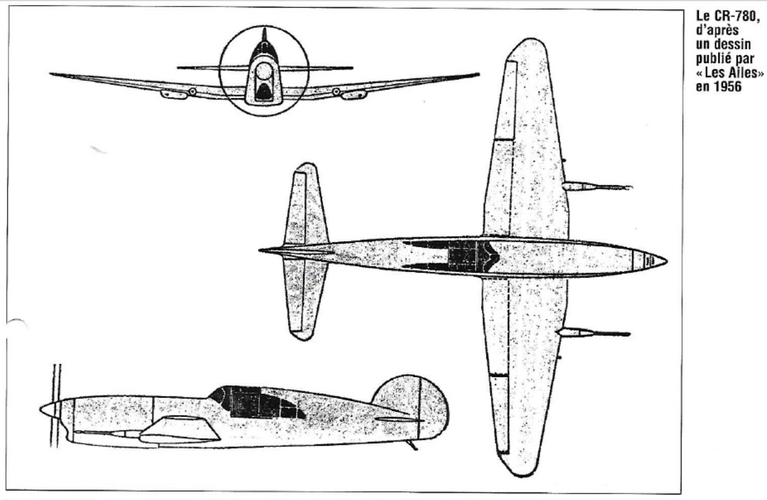You are using an out of date browser. It may not display this or other websites correctly.
You should upgrade or use an alternative browser.
You should upgrade or use an alternative browser.
Various Caudron Prototypes & Projects
- Thread starter hesham
- Start date
blackkite
Don't laugh, don't cry, don't even curse, but.....
- Joined
- 31 May 2007
- Messages
- 8,762
- Reaction score
- 7,483
Caudron CR.760 and CR.770 (and 780(only explanation, please confirm bottom picture)).
https://forum.warthunder.com/index.php?/topic/388845-caudron-renault-cr-760-770/
"The search for ways to improve the flight performance of the CR.714C1 would inevitably lead designers to the idea of using a larger engine. One of the suitable samples was the RC-40 engine of the Italian firm Isotta-Frascini. According to the scheme, it corresponded to Renault 12R - 12-cylinder V-shaped inverted, but developed much higher power - 730 hp. At the same time the working volume of the Italian engine was 21 liters, while the "Renault", which produced 450 hp, - 19 liters. The project for this engine was initially designated C.715. In December 1938, two prototypes were built (factory numbers 8978 and 8979). The second of them received an Italian motor, as well as the new designation CR.760 and serial number 01.
CR.760 differed from CR.714C1 not only by the engine - its fuselage was not wooden, but had a metal set of chrome-molybdenum pipes. The capacity of the fuel tank was increased to 305 liters. Armament also became more powerful-six 7.5 mm machine guns with an ammunition of 500 cartridges per guns. The production version planed to replacement the machine guns with a pair of 20-mm guns.
The first copy of the CR.760 in the last quarter of 1939 was ground tested, but for the first time it took off on April 6, 1940, piloted by R. Delmott. In May, the aircraft flew well-known Italian pilot Arthur Ferrarin. The aircraft showed excellent flight data: the maximum speed was 570 km / h, the altitude of 4000 m reached 5 minutes. But the mass production of the Cr.760 (due to the defeat of France) was never started. The only constructed specimen became a German trophy.
the Cr.770 is an easy fighter developed by the French firm Caudron. The aircraft became the further development of the lightweight Cr.714 Cyclone fighter. Work on the aircraft was conducted since 1939 in parallel with the development of Cr.760. The aircraft was equipped with a sixteen-cylinder air-cooling engine Renault 626 with a power of 800 hp. The aircraft received a reinforced (in comparison with Cr.714) armament consisting of six 7.5-mm MAC-34 machine guns. The first flight of the aircraft took place in June 1940. Further work on the aircraft prevented the German invasion of France. "
Picture source.
https://forum.warthunder.com/index.php?/topic/230196-data-sheet-caudron-c714/
https://forum.warthunder.com/index.php?/topic/388845-caudron-renault-cr-760-770/
"The search for ways to improve the flight performance of the CR.714C1 would inevitably lead designers to the idea of using a larger engine. One of the suitable samples was the RC-40 engine of the Italian firm Isotta-Frascini. According to the scheme, it corresponded to Renault 12R - 12-cylinder V-shaped inverted, but developed much higher power - 730 hp. At the same time the working volume of the Italian engine was 21 liters, while the "Renault", which produced 450 hp, - 19 liters. The project for this engine was initially designated C.715. In December 1938, two prototypes were built (factory numbers 8978 and 8979). The second of them received an Italian motor, as well as the new designation CR.760 and serial number 01.
CR.760 differed from CR.714C1 not only by the engine - its fuselage was not wooden, but had a metal set of chrome-molybdenum pipes. The capacity of the fuel tank was increased to 305 liters. Armament also became more powerful-six 7.5 mm machine guns with an ammunition of 500 cartridges per guns. The production version planed to replacement the machine guns with a pair of 20-mm guns.
The first copy of the CR.760 in the last quarter of 1939 was ground tested, but for the first time it took off on April 6, 1940, piloted by R. Delmott. In May, the aircraft flew well-known Italian pilot Arthur Ferrarin. The aircraft showed excellent flight data: the maximum speed was 570 km / h, the altitude of 4000 m reached 5 minutes. But the mass production of the Cr.760 (due to the defeat of France) was never started. The only constructed specimen became a German trophy.
the Cr.770 is an easy fighter developed by the French firm Caudron. The aircraft became the further development of the lightweight Cr.714 Cyclone fighter. Work on the aircraft was conducted since 1939 in parallel with the development of Cr.760. The aircraft was equipped with a sixteen-cylinder air-cooling engine Renault 626 with a power of 800 hp. The aircraft received a reinforced (in comparison with Cr.714) armament consisting of six 7.5-mm MAC-34 machine guns. The first flight of the aircraft took place in June 1940. Further work on the aircraft prevented the German invasion of France. "
Picture source.
https://forum.warthunder.com/index.php?/topic/230196-data-sheet-caudron-c714/
Attachments
-
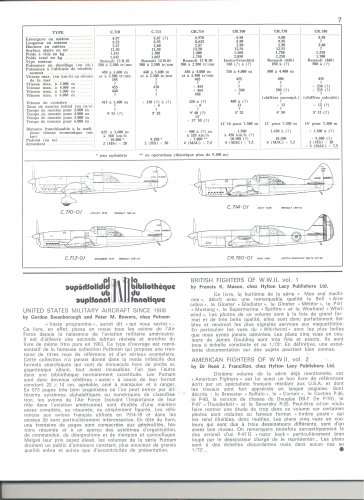 CAUDRON FIGHTERS.jpg1 MB · Views: 481
CAUDRON FIGHTERS.jpg1 MB · Views: 481 -
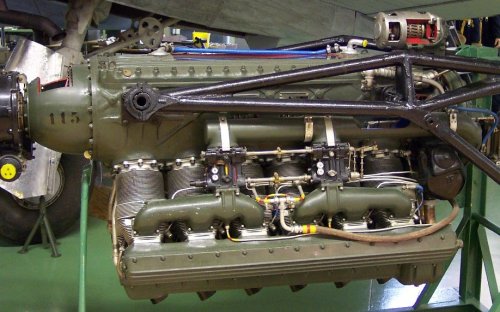 Isotta Fraschini air cooling inverted v12 engine.jpg129.6 KB · Views: 179
Isotta Fraschini air cooling inverted v12 engine.jpg129.6 KB · Views: 179 -
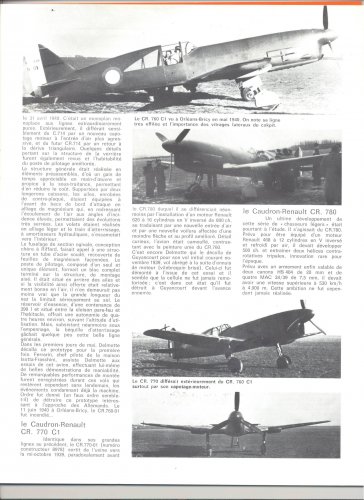 760 770 and 780.jpg811.2 KB · Views: 156
760 770 and 780.jpg811.2 KB · Views: 156 -
 cr770-2.jpg74.9 KB · Views: 141
cr770-2.jpg74.9 KB · Views: 141 -
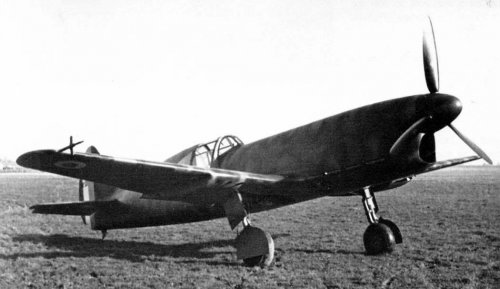 cr770-1.jpg79 KB · Views: 126
cr770-1.jpg79 KB · Views: 126 -
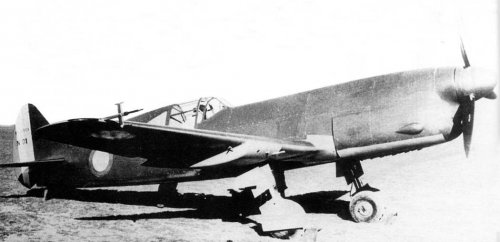 cr760-2.jpg64.1 KB · Views: 128
cr760-2.jpg64.1 KB · Views: 128 -
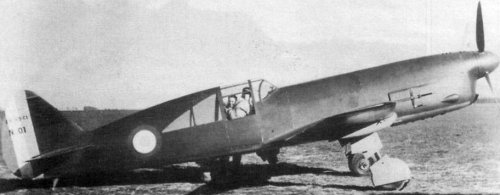 C.760.jpg58.5 KB · Views: 150
C.760.jpg58.5 KB · Views: 150 -
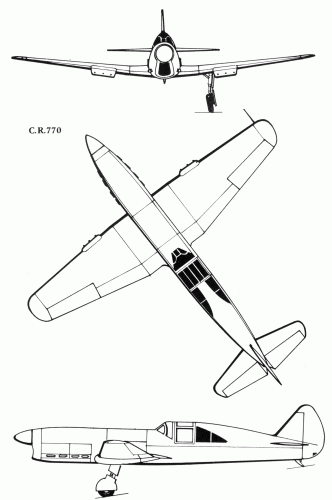 cr770-1.gif239.1 KB · Views: 351
cr770-1.gif239.1 KB · Views: 351 -
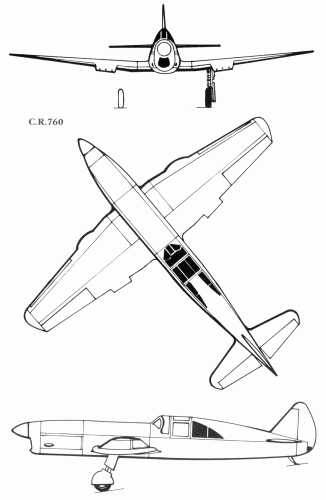 cr760-1.gif220.8 KB · Views: 374
cr760-1.gif220.8 KB · Views: 374 -
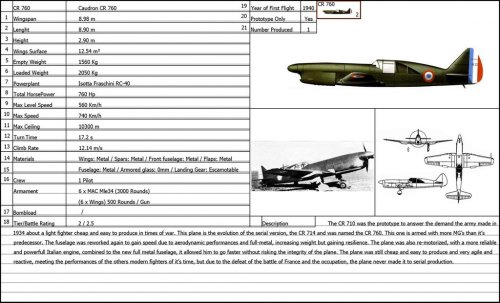 detail_caudron_cr_760_by_arnor022-d9fh4x5.jpg152 KB · Views: 380
detail_caudron_cr_760_by_arnor022-d9fh4x5.jpg152 KB · Views: 380
blackkite
Don't laugh, don't cry, don't even curse, but.....
- Joined
- 31 May 2007
- Messages
- 8,762
- Reaction score
- 7,483
CR.710 and CR.713. Interesting rear window.
CR.710 had fixed landing gear.
https://www.youtube.com/watch?v=L6UI9j6Ts8s
CR.710 had fixed landing gear.
https://www.youtube.com/watch?v=L6UI9j6Ts8s
Attachments
blackkite
Don't laugh, don't cry, don't even curse, but.....
- Joined
- 31 May 2007
- Messages
- 8,762
- Reaction score
- 7,483
Caudron JN. C.760 (F-AZJY)
http://www.lecharpeblanche.fr/registre/caudron-jn-c-760-f-azjy/
”Built in the 1990s by Jean Noan (engineer has the company Bertin CBC), this replica of Caudron C.760 was developed from a cell of North 3202 and was powered by a 600 HP Renault engine.
Very little documentation was available and Jean Noan explained: "I went from two photos, since this aircraft which is the last in the line of these machines was released in April 1940. When I found myself faced with this project, I did realize probably not of the scope of work this could represent. »
Its realization indeed asked 12 years and 25,000 hours of work. The aircraft aprticipe to many meetings but today, due to a deformation of his cell, the C.760 is completely disassembled and stored in the hangars of Cerny - La Ferté Alais.
Editor's Note: One of our visitors indicates: "Except my mistake, this replica is still in flying condition and is today based in the region of Issoire." Anyone have the fresh news of the F-AZJY? Further information on the matter would be welcome!
Some internet research seems to show that the device was still at La Ferté-Alais but it was reassembled. No recent picture don't show in flight.”
https://www.youtube.com/watch?v=lsYRS-yzxmg
http://www.lecharpeblanche.fr/registre/caudron-jn-c-760-f-azjy/
”Built in the 1990s by Jean Noan (engineer has the company Bertin CBC), this replica of Caudron C.760 was developed from a cell of North 3202 and was powered by a 600 HP Renault engine.
Very little documentation was available and Jean Noan explained: "I went from two photos, since this aircraft which is the last in the line of these machines was released in April 1940. When I found myself faced with this project, I did realize probably not of the scope of work this could represent. »
Its realization indeed asked 12 years and 25,000 hours of work. The aircraft aprticipe to many meetings but today, due to a deformation of his cell, the C.760 is completely disassembled and stored in the hangars of Cerny - La Ferté Alais.
Editor's Note: One of our visitors indicates: "Except my mistake, this replica is still in flying condition and is today based in the region of Issoire." Anyone have the fresh news of the F-AZJY? Further information on the matter would be welcome!
Some internet research seems to show that the device was still at La Ferté-Alais but it was reassembled. No recent picture don't show in flight.”
https://www.youtube.com/watch?v=lsYRS-yzxmg
Attachments
blackkite
Don't laugh, don't cry, don't even curse, but.....
- Joined
- 31 May 2007
- Messages
- 8,762
- Reaction score
- 7,483
Hi! Caudron racer.
https://en.wikipedia.org/wiki/Caudron_C.460
http://www.airwar.ru/enc/law1/c450.html
http://www.airwar.ru/enc/law1/c460.html
http://www.airwar.ru/enc/law1/c461.html
http://www.airwar.ru/enc/law1/c561.html
"In 1936, the firm Société des Avions Caudron was built a racing aircraft c. 561. It was a mix of C. 461 and a power plant c. 560. This resulted in a single low of the offset structure fitted with the Renault 446 engine power of 450 hp.
Despite the fact that the aircraft was built specifically for the Coupe Deutch, to take part in them, c. 561 was never able to-failed with the engine. The designation of the engineer Marcel Riffar (Marcel Riffard) did not become by on more promising machines."
https://en.wikipedia.org/wiki/Caudron_C.460
http://www.airwar.ru/enc/law1/c450.html
http://www.airwar.ru/enc/law1/c460.html
http://www.airwar.ru/enc/law1/c461.html
http://www.airwar.ru/enc/law1/c561.html
"In 1936, the firm Société des Avions Caudron was built a racing aircraft c. 561. It was a mix of C. 461 and a power plant c. 560. This resulted in a single low of the offset structure fitted with the Renault 446 engine power of 450 hp.
Despite the fact that the aircraft was built specifically for the Coupe Deutch, to take part in them, c. 561 was never able to-failed with the engine. The designation of the engineer Marcel Riffar (Marcel Riffard) did not become by on more promising machines."
Attachments
-
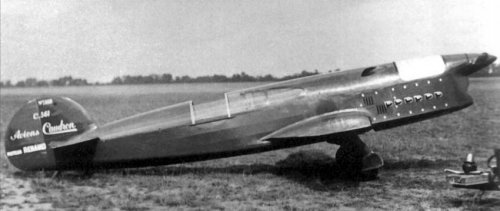 c561-1.jpg44.2 KB · Views: 144
c561-1.jpg44.2 KB · Views: 144 -
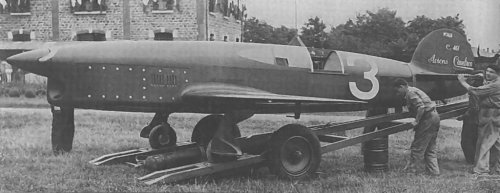 c461.jpg66.4 KB · Views: 116
c461.jpg66.4 KB · Views: 116 -
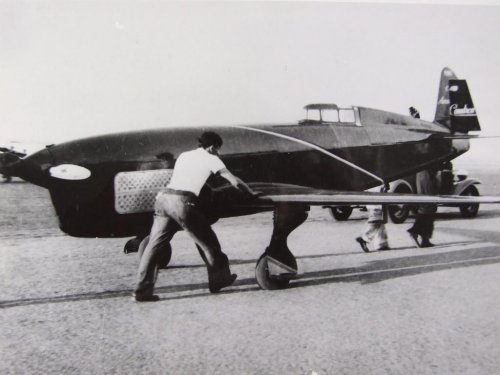 C.460 picture.jpg72.9 KB · Views: 130
C.460 picture.jpg72.9 KB · Views: 130 -
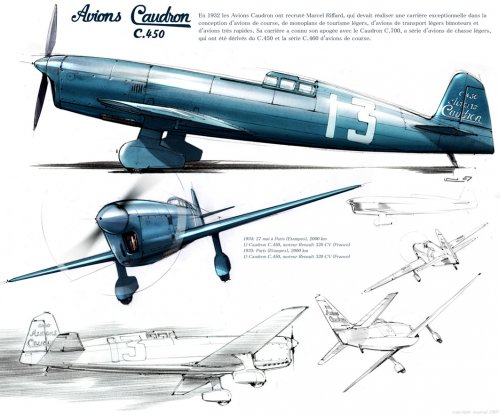 Caudron-C450.jpg236.4 KB · Views: 152
Caudron-C450.jpg236.4 KB · Views: 152 -
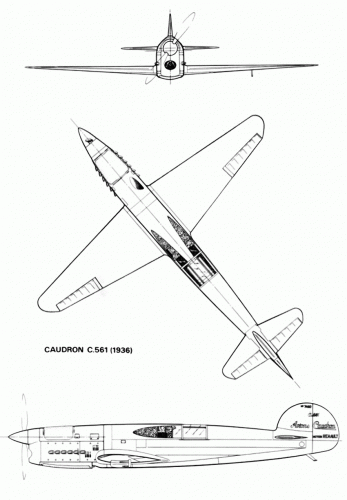 c561-1.gif91.8 KB · Views: 193
c561-1.gif91.8 KB · Views: 193 -
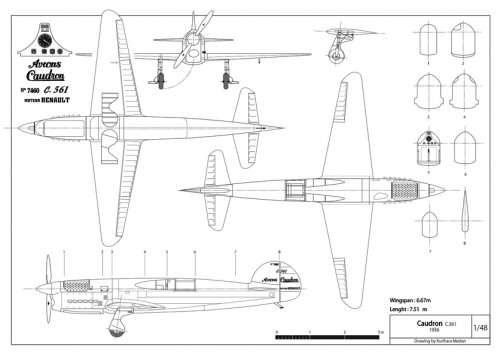 caudoron-C_561.jpg743.9 KB · Views: 229
caudoron-C_561.jpg743.9 KB · Views: 229 -
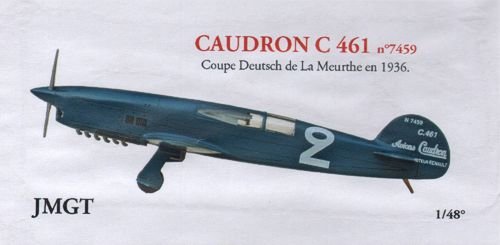 c461 side view.jpg17.6 KB · Views: 171
c461 side view.jpg17.6 KB · Views: 171 -
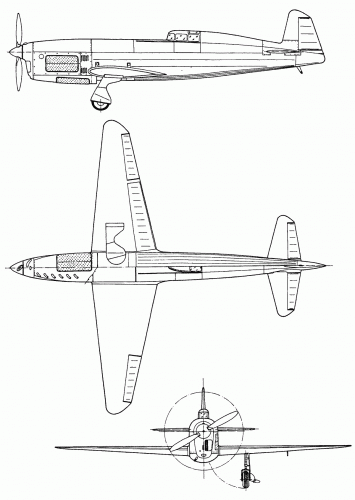 Caudron-C_460.gif41.1 KB · Views: 155
Caudron-C_460.gif41.1 KB · Views: 155 -
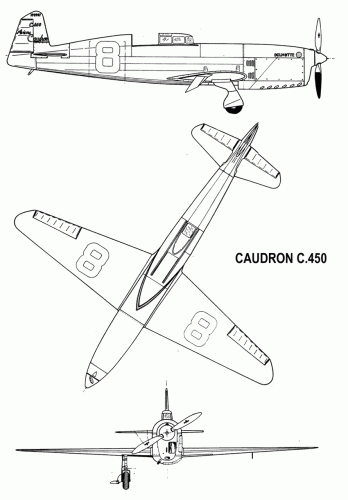 c450-1.gif135.7 KB · Views: 186
c450-1.gif135.7 KB · Views: 186 -
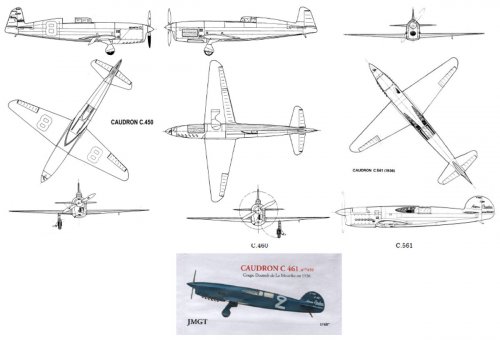 Caudron_Racer.jpg106.7 KB · Views: 208
Caudron_Racer.jpg106.7 KB · Views: 208
Tonton-42
ACCESS: Secret
- Joined
- 10 May 2014
- Messages
- 354
- Reaction score
- 655
Justo Miranda said:Girls & Racers
It is a comic strip of the excellent Romain Hugault
- Joined
- 26 May 2006
- Messages
- 34,555
- Reaction score
- 15,342
From Les Avions Caudron Volume II book.
Attachments
- Joined
- 26 May 2006
- Messages
- 34,555
- Reaction score
- 15,342
in 1937,and for French Specification C.2/C.3,the Caudron also submitted the C.850,it
was a three seat heavy fighter powered by two 450 hp Renault R00/01.
From Ailes 12/1955,
Attachments
Very cool that this 1937 design was discussed in a 1955 article in comparison with the SNCASO Sud-Ouest SO.7100 Dogue that would go on to compete in the French 1956 ground attack/COIN competition. See https://www.secretprojects.co.uk/threads/sncaso-sud-ouest-so-7100-«-dogue-»-ground-attack-coin-aircraft-project.12404/. The Caudron design is an interesting combination of a small, clean, wooden airframe, twin engines, and fixed landing gear for operation from fields close to the front. By the way, it is actually a two-seater, not a three-seater. Cheers, Matthew
Last edited:
sgeorges4
I really should change my personal text
- Joined
- 8 October 2017
- Messages
- 665
- Reaction score
- 332
caudron cyclone,isn't this basically the 714 with a bronzavia(that wasn't into the production aircraft)?

from https://www.wikiwand.com/fr/Caudron_C.714

from https://www.wikiwand.com/fr/Caudron_C.714
- Joined
- 25 July 2007
- Messages
- 4,260
- Reaction score
- 4,081
caudron cyclone,isn't this basically the 714 with a bronzavia(that wasn't into the production aircraft)?
Bronzavia SA provided a host of components. Are you referring to the Renault's supercharger?
AFAIK, all Cyclone models featured Bronzavia updraught carburettors. The C.714 was powered by a Renault 12R-03 fitted with a new Bronzavia negative g carb. Bronzavia also made the C.714's exhaust manifolds/flame-dampers.
- Joined
- 25 July 2007
- Messages
- 4,260
- Reaction score
- 4,081
First time to hear about C.531 ?
A typo, I believe.
A Caudron 'C.531' would logically be a development of the C.530 Rafale 2-seater. This drawing represents one of three C.631 Simouns.
- Joined
- 26 May 2006
- Messages
- 34,555
- Reaction score
- 15,342
About the R.300, from "Les avions Caudron-Renault", by Harry Robinson, Docavia publisher :
It was a project of racer designed by Marcel Riffard and Otfinovsky, for the Deutsche-de-la-Meurthe competition of 1932. Only a scaled mock-up was made, and tested in a wind tunel.
Engine was to be a Flat-8 configuration, 8 liters, 320 HP at 3,000 rpm. It was never built too.
Projected datas : Span 6.25m x Lengh 5.75m - Wing aera 7m² - Total weight 770kg
Sorry for the quality, by this book is greater than my A4 scanner ...
Was that any Info if they intended to develop it into a fighter project ?.
- Joined
- 26 May 2006
- Messages
- 34,555
- Reaction score
- 15,342
Was that any Info if they intended to develop it into a fighter project ?.
By the way,Mr. Marcel Riffard and Mr. Otfinovsky created some designs before
joined Caudron and they continued developing under the new company,so a big possibility this was a real project ?!,may it was Caudron C.310 ?.
- Joined
- 25 June 2009
- Messages
- 14,598
- Reaction score
- 5,644
The designation "C.310" does not appear anywhere, not even in the very thorough Docavia book. We can't just throw hypothetical designations like that without a semblance of evidence. When you do, there is always a risk of your post being misinterpreted as fact. Do you have a particular reason to associate this project (itself hypothetical) with that designation? Does it fit the chronology?By the way,Mr. Marcel Riffard and Mr. Otfinovsky created some designs before
joined Caudron and they continued developing under the new company,so a big possibility this was a real project ?!,may it was Caudron C.310 ?.
- Joined
- 26 May 2006
- Messages
- 34,555
- Reaction score
- 15,342
The designation "C.310" does not appear anywhere, not even in the very thorough Docavia book. We can't just throw hypothetical designations like that without a semblance of evidence. When you do, there is always a risk of your post being misinterpreted as fact. Do you have a particular reason to associate this project (itself hypothetical) with that designation? Does it fit the chronology?
Of course I know that very well,but that's only a speculative designation,I
never said it's a real one !,and I have my source,which explained that the
two designers had been developed many concepts just before and when
they joined Caudron,their inventions get the Caudron series after that,and
I always speculate to be nearly the truth,it's not just idea inside my head ?.
I have two sources,one I can give you,
Omnium Metallurgique Industriel
From 1931 to 1932, Riffard worked at Omnium Métallurgique Industriel (OMI), an engine builder whose products for motorcycles and aircraft were sold under the Chaise name. At OMI, Riffard was tasked with testing their first 95 hp (71 kW) inverted cylinder aircraft engine.[2] It was also during his time at OMI that Riffard designed an aircraft called the MR-300 intended specifically to compete in the Coupe Deutsch de la Meurthe. The aircraft's side profile was wing-shaped, and may have acted as a lifting body. While one reference says that it was powered by an 8 L (488 cu in) flat-sixteen engine, others say that it was a Chaise flat-8 designated 8C, producing 300 hp (224 kW).
Also at OMI at this time was Russian aeronautical engineer Georges Otfinovsky, with whom Riffard would work on several designs later at Caudron.
Marcel Riffard - Wikipedia
Similar threads
-
Morane-Saulnier Interwar Fighter Projects and Prototypes
- Started by hesham
- Replies: 17
-
-
-
Trella Aircraft prototypes and projects
- Started by Stargazer
- Replies: 0
-
Various Russian Prototypes and Projects During & Pre-WW1
- Started by hesham
- Replies: 144

